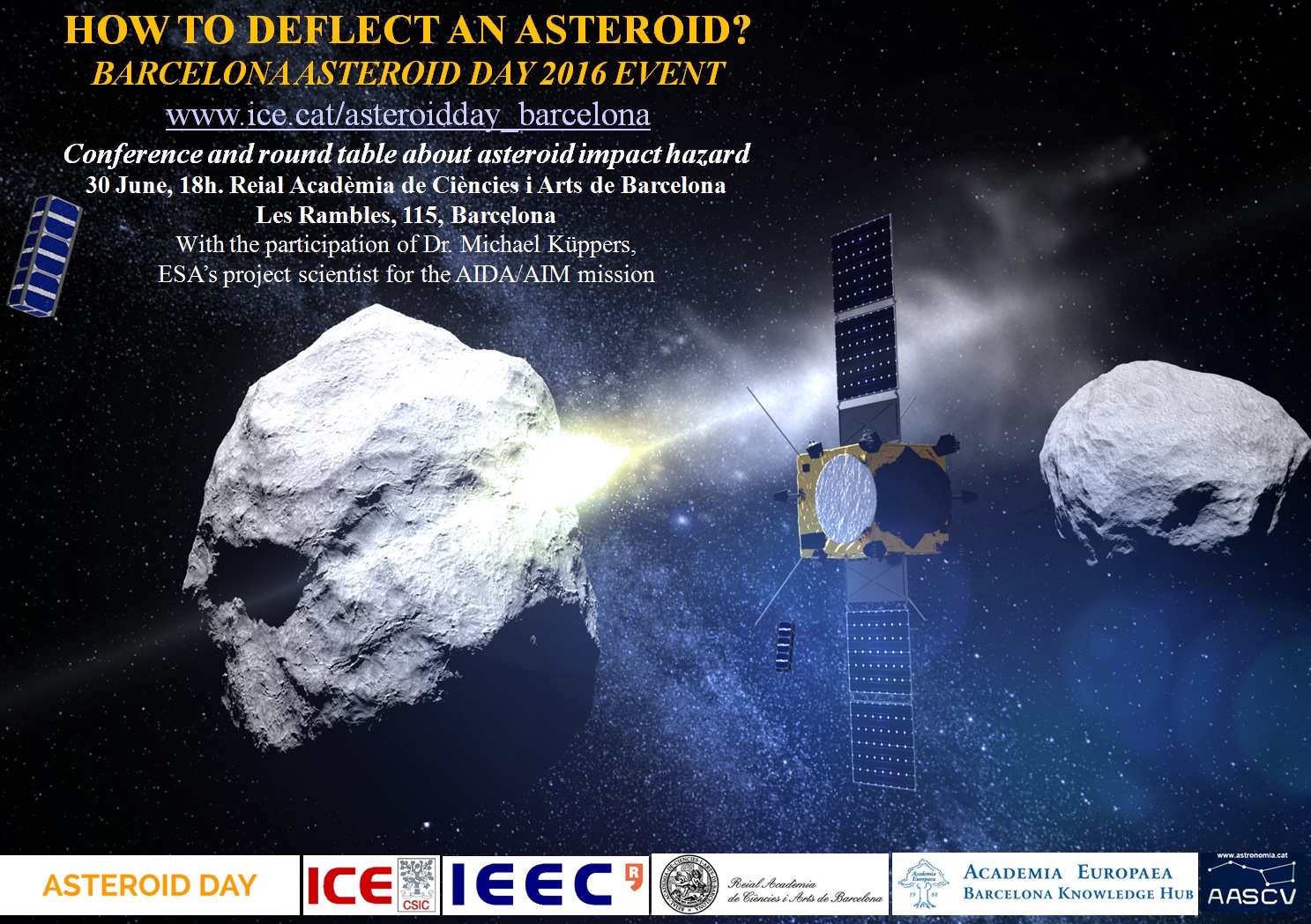Asteroid Day. Are we able to divert potentially hazardous asteroids?

Poster_Asteroid_Day_Barcelona_2016_ENG
The event will take place on June 30th at six pm at the Royal Academy of Sciences and Arts of Barcelona and will feature Dr. Michael Küppers from the European Space Astronomy Centre (ESAC) of the European Space Agency (ESA) who will explain the objectives and implications for future of AIDA, a joint ESA-NASA mission directed to binary asteroid Didymos, comprising the Asteroid Impact mission (AIM) of ESA and the Double asteroid Redirection Test (DART) of NASA.
During the event, a round table about impact hazard, moderated by Dr. Josep Maria Trigo, principal researcher of the Meteorites, Small Bodies and Planetary Sciences group at Institute of Space Sciences (IEEC-CSIC) and co-organizer of the event will also be held. Participants will be the professors Jordi Llorca (UPC), Jorge Núñez (UB-RACAB) and Dra. Mar Tapia (IGEF-IEC).
Exploring asteroids in the Solar System
A new age in space research started with the exploration of solar system minor bodies, being Stardust (NASA) and Hayabusa (JAXA) missions. Future space missions in this field are aimed to achieve the sample return from Near Earth Asteroids (Osiris-REx and Hayabusa 2) or even to test impact deflection techniques to be used in future hypothetical encounters of our planet with Potentially Hazardous Asteroids.
AIDA mission
In this regard, AIDA mission (Asteroid Impact and Deflection Assessment) has been born as a joint ESA-NASA mission to test the impact deflection technique in binary asteroid 65803 Didymos. That asteroid system is formed by a main asteroid of about 800 m in diameter and its 150-m in diameter satellite. The mission is formed by two spacecrafts: the Asteroid Impact Mission (AIM) leaded by the European Space Agency (ESA) and the Double Asteroid Redirection Test (DART) of NASA. It is planned that DART spacecraft will impact Didymos moon in order to quantify our ability to deflect asteroids with a projectile. AIM will study the impact from close orbit, also using instruments on board of cubesats.
In fact, Dr. Trigo is one of the principal investigators of PALS, a CubeSat project preselected to participate in the AIDA mission. The main goal of PALS nano-satellites is to obtain data of the magnetization of the asteroid, high-resolution images and through a video-spectrometer determine the chemical composition and the temperature reached by the hot steam as a result of the impact of DART on Didymos satellite.
Asteroid Day worldwide
Asteroid International Day is a global movement to raise public awareness of possible collisions of asteroids and the means we have to protect the Earth. The initiative emerged in 2015 from the hand of Dr. Brian May, an astrophysicist and guitarist of the rock group Queen; Apollo’s astronaut Rusty Schweickart; and German cineast Grig Richter. Participating cities also are Tenerife, which celebrates ASteroid Day withimn the Starmus fetsival, San Francisco, Vienna and Seoul, among others.
More information:
